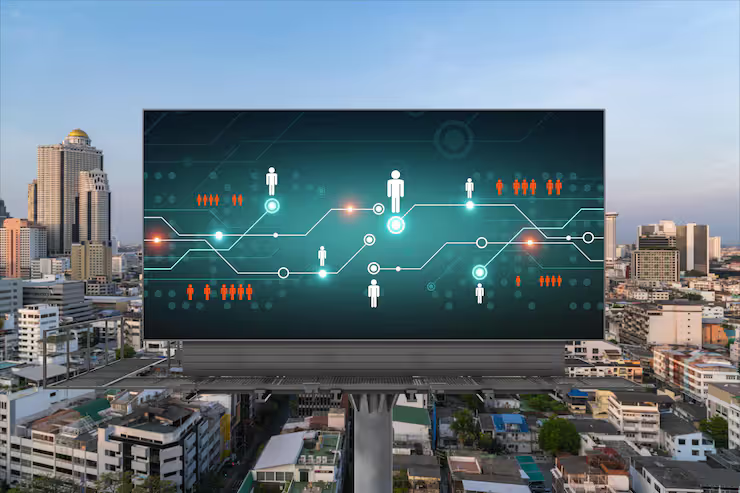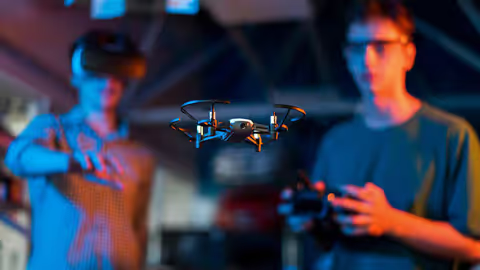
Discover Digital Billboard Trends In-Depth Information, Insights, and Resources
Digital billboards, or Digital Out-Of-Home (DOOH) displays, are electronic screens used to show dynamic visuals, animations, and real-time content in public environments. These displays appear on highways, urban centers, shopping districts, airports, and transit hubs. They emerged from advancements in LED/LCD screen technology, increased demand for data-driven advertising, and the need for adaptable, high-impact media formats.
Unlike traditional printed billboards, DOOH content can shift instantly based on schedules, context, or live data. This flexibility is what makes digital billboards a core component of modern outdoor communication.

Importance
Digital billboards have grown in importance due to several interconnected factors:
-
Higher Engagement: Movement, animation, and contextual visuals capture greater attention compared to static images.
-
Instant Updates: Advertisers can change content by time of day, weather, or events, making campaigns responsive and relevant.
-
Audience Measurement: Footfall analytics, mobile data, and sensor insights allow more precise measurement of reach, dwell time, and audience demographics.
-
Data-Driven Advertising: Programmatic DOOH enables automated placement and scheduling that adapts to conditions in real time.
-
Sustainability: Many modern digital screens use energy-efficient LEDs, solar options, and recyclable materials, supporting environmental goals.
-
Urban Visibility: They offer high-impact presence in areas with heavy foot or vehicle traffic, strengthening brand visibility.
Digital billboards affect advertisers, media planners, technology providers, urban authorities, and the public. For marketers, DOOH delivers powerful, contextual messaging. For cities, it supports modernization of public communication and replaces outdated static infrastructure.
Recent Updates & Trends (2024–2025)
Programmatic DOOH Expansion
Programmatic DOOH has become a mainstream method for managing campaigns, automating scheduling, and optimizing targeting. Real-time bidding and data-triggered placements are increasingly common across major markets.
AI-Enhanced Content
AI tools now automate content adaptation based on weather conditions, traffic density, event timing, or audience patterns. Some networks use camera-based analytics (within legal limits) to update content depending on crowd behavior or engagement.
Growth of 3D, AR & Immersive Displays
3D anamorphic billboards, holographic visuals, and AR-enabled displays have rapidly expanded in major cities. These immersive formats enhance storytelling and generate strong audience attention and social media amplification.
Sustainability-Focused Hardware
Manufacturers are releasing more energy-efficient screen models, improving brightness control, solar-integration options, and durability features. Many newer billboards reduce energy consumption significantly compared to earlier LED systems.
Real-Time Connectivity & 5G Integration
As 5G coverage expands, digital billboards can update content in real time. Weather feeds, live updates, traffic triggers, event-based content, and crowd analytics are becoming standard capabilities.
Market Developments
Significant investments and acquisitions within the DOOH ecosystem indicate growing confidence in the sector. Many markets are projected to experience steady growth through 2030, driven by urbanization and demand for measurable outdoor advertising.
Government-Led Infrastructure Changes
Several cities worldwide are shifting rules to favor digital LED displays for public communication and outdoor messaging. Digital monopoles and high-visibility LED installations are increasingly becoming part of planned urban infrastructure.
Laws, Policies & Regulations
Digital billboard regulations vary across countries and cities, but they commonly involve the following areas:
Definitions & Standards
Industry bodies define DOOH formats, measurement guidelines, and responsible advertising practices. These definitions help ensure consistency across media planning and reporting.
Zoning, Spacing & Location Rules
Municipal authorities define where digital billboards can be installed, how large they can be, and what types of displays are permitted. Common rules regulate distance from roads, building elevations, and urban districts.
Brightness & Safety Requirements
Governments often impose restrictions on brightness levels, automated dimming, display transitions, and animation speed to minimize driver distraction, especially on highways.
Environmental & Energy Compliance
Some jurisdictions require energy-efficient screens, limits on power consumption, and use of responsible materials to reduce environmental impact.
Privacy & Data Use
When digital billboards use analytics or sensors, they must follow local data protection laws. Regulations may restrict facial recognition, individual identification, or storage of sensitive data.
Public Messaging Guidelines
Many cities require digital billboards to allocate a portion of display time to public service announcements, emergency alerts, or community communication.
Tools & Resources
A variety of tools and platforms support planning, creating, and managing digital billboard campaigns:
-
Programmatic DOOH Platforms: Systems that automate placements, scheduling, targeting, and campaign optimization.
-
Audience Insights Tools: Sensor analytics, mobile location data platforms, and footfall measurement tools for estimating audience exposure.
-
Creative Tools: Video and animation software, graphic design platforms, and AI-based creative assistants for generating dynamic content.
-
Energy & Sustainability Calculators: Tools that help estimate power usage, brightness settings, or potential energy savings from display types.
-
Regulatory Checklists: Local authority websites and industry associations offering guidelines on compliance, zoning rules, and signage standards.
-
Planning Dashboards: Tools for mapping digital screen locations, estimating reach, analyzing traffic flow, and comparing audience profiles.
FAQs
Q: How is DOOH different from traditional outdoor advertising?
DOOH uses digital screens to display animated or changing content, while traditional outdoor ads use printed static posters. DOOH is more flexible, dynamic, and data-powered.
Q: Can digital billboard campaigns be measured accurately?
Yes. Many modern DOOH systems use footfall analytics, mobile data, and sensors to measure impressions, engagement patterns, and audience time-based behavior.
Q: What challenges do advertisers face with digital billboards?
Challenges may include navigating local regulations, integrating technology systems, coordinating creative updates in real time, and ensuring compliance with privacy requirements.
Q: Are digital billboards environmentally friendly?
Many new models use energy-efficient LEDs, automated dimming, and sustainable materials. They also eliminate the need for printed posters, reducing waste.
Q: Are there safety concerns associated with digital billboards?
Safety guidelines typically address brightness, animation speed, and screen placement near roadways to prevent distraction. When properly regulated, digital billboards operate within accepted safety standards.
Conclusion
Digital billboards have transformed outdoor media by merging the advantages of digital technology with the high visibility of public spaces. With advancements in AI, programmatic placement, immersive visuals, and sustainability, DOOH continues to evolve into a powerful and data-informed advertising channel.
As cities update their visual infrastructure and connectivity expands, DOOH provides a bridge between digital intelligence and physical environments. Marketers who embrace contextual creatives, responsible data use, and strategic placement can achieve strong engagement in the years ahead. Digital billboards will play an increasingly important role in how information, branding, and public communication are delivered across urban landscapes.










